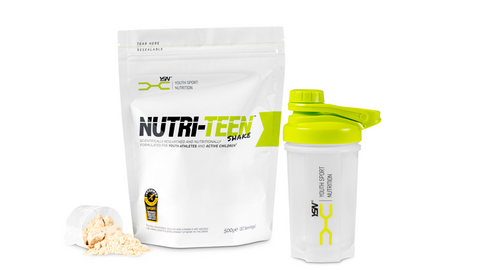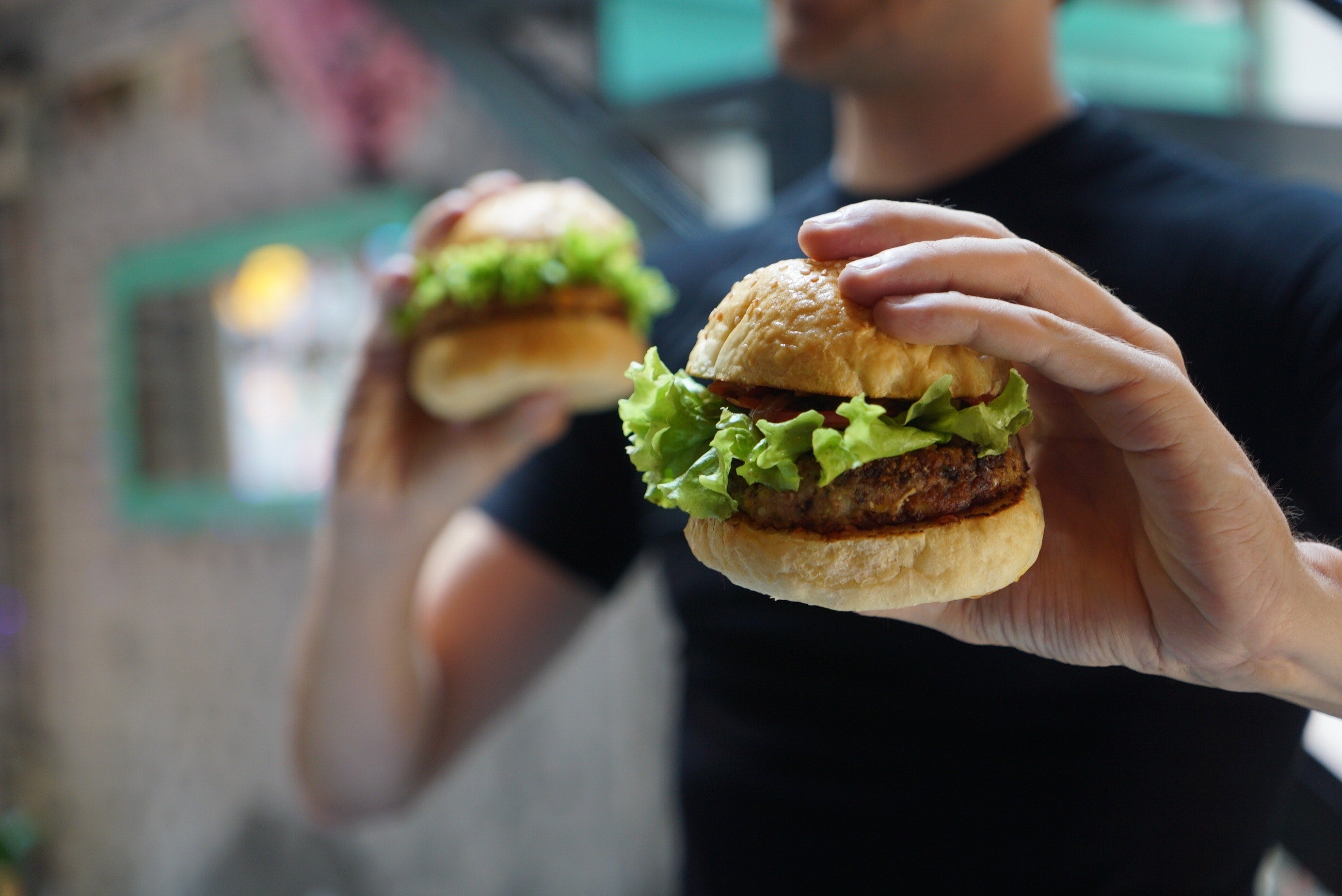When is a processed food a good option?
We all hear processed food and fast food is ‘bad’ for us, but are all processed foods ‘bad’ and are there any times it can be beneficial?
The truth is nearly all the foods we eat have been processed to some extent
The industrial revolution saw large scale automation – the food industry managed to increase production of food and helped the UK navigate mass malnutrition such as grinding and pressing grains into flour and dairy milk production. Which in turn allowed for mass production of flours, breakfast cereals and to make commodities such as bread, and pasta on mass. While this was a great accomplishment to provide an abundance of food at lower cost, it also saw the beginning of the ultra-processed and fast-food industries [1].
Now, the supermarket is mainly made up of processed foods of varying nutrient contents [2].

We are swamped with an abundance of super convenience highly palatable foods from fast food drive throughs to grab and go snacks, while these foods can be added occasionally into a healthy balanced diet it has driven a rise of concerns over the impact of these foods on human health, in particular children’s health [3].
It is true that there has been an increase in childhood and adult obesity since increased access to foods that have undergone ultra-processing [4].
Ultra-processing has presented an array of new highly palatable, intriguing, and convenient foods, meals and snacks.
Food processing is any process that a food undergoes, and this can be as simple as chopping up some veg to boil in a pan or cooking a chicken breast – which without doing so would not be edible and cause food poisoning.
On the other end of the spectrum are the foods that have been refined, reformed, and extracted, with chemicals added; these foods are far removed from their natural state and no longer have any desirable nutrient qualities.
Ultra-processed foods are often combined with sugar, salt and oils/fats to create a highly palatable morish product, yet nutrient void – the ingredient list is often unreadable or unrecognisable. It is these that are referred to as ultra-processed foods and regular consumption is associated with poor health, obesity, diabetes, and non-alcoholic fatty liver disease [5].
Fact! - Ultra-processed foods account for about 90% of all the sugar Americans eat. and don’t think that the UK is any better. The UKs rate of consumption of ultra-processed food is increasing at a rapid rate [6].
Nearly all ultra-processed food that are high in fat, salt and sugar (known as HFSS foods) are view as being unhealthy when eating regularly (more than 1-2 times per week); eating too many of these foods has shown to significantly increases the risk of disease, coupled with a deterioration of health- both impacting short and long term physical and mental health [7].
A wealth of research show that a growing number of children, adolescence, and youths (and adults) are consuming a large percentage of their daily calories from ultra-processed foods and a number that is increasing. As ultra-processing removes all fibre, and any naturally occurring vitamins & minerals an increased consumption provides large calories hit but void of any micronutrients that are required for all bodily functions. Regular intakes of ultra-processed foods is associated with poor nutritional status and thus increases the risk of illness and disease, even in those who may not present as obese or overweight [8].
Discussions surrounding processed foods always gains an emotive response – and in many cases rightly so. along with the research to support both its attributes and detriments to health.
NOVA Classification
To classify and rank the level of processing a food has undergone. the food industry formed a framework called the NOVA classification.
The NOVA classification defines the level of processing, and how the food product may impact health and food choice.
But as with many of these types of classifications and frameworks they are a blanket statement which does not consider the complexities of the foods origin, or the nutrient level within the food or meal.
So can processed foods be healthy?
Let’s first, take a step back and look at the classifications
Levels of processing and the NOVA groups [9]. So processed foods is really an umbrella term that has been given levels of classification to enable us to make some sense of what is good and what is bad for us. A UN project team came up with something called the NOVA food classification system. There are four main categories
- Unprocessed or minimally processed foods
If you eat an apple off a tree or eat a tomato from your garden, you are eating a completely unprocessed food. As stated, most foods go through some sort of processing. If we think of some minimally processed foods like a bag of apples from the supermarket or some shredded lettuces are all healthy foods that can be eaten daily and at multiple times of the day.

- Processed culinary ingredients
Processed culinary ingredients are obtained directly from unprocessed or minimally processed foods or from nature. They have been altered by processes such as pressing, refining, and grinding so that they can be used in cooking. Examples include sugar obtained from the cane, syrup from maple trees and vegetable oils extracted from olives or seeds. Of course, these span spices which can be hugely beneficial to health to sugar that can be eaten within limits.

- Processed foods
Also known as “Lightly Processed Foods” includes foods like tomatoes, green beans, tuna, and berries that are canned or frozen soon after harvesting/catching. They may have some added ingredients, such as salt, sugars or oils and generally have no more than 4 ingredients. Commons foods such as breads, cheeses and pastas are examples of lightly processed foods. Packaged items with only a few high-quality added ingredients (e.g., herbs, spices, oils) might also be considered lightly processed, such as some pasta sauces, and salad dressings.

- Heavily/Ultra Processed food
Many foods in this category are often called Fast Food or Junk Food. These are foods made with five or more ingredients and are filled with hidden sugars, oils, fats, salt, emulsifiers, stabilizers, and preservatives. Ultra-processed foods include lots of added ingredients, additives and chemicals that don’t occur naturally and are not designed for regular consumption.

But, the NOVA classification can be misleading.
The premise of NOVA is a great but can be too simplistic and tying processing into health doesn’t always work for all foods [10].
Two worthy examples of food that are nutritious but unfairly classified are tinned tomatoes that are much higher antioxidants and phytonutrients (plant nutrients) than fresh tomatoes. And baked beans that are rich in fibre, protein. minerals and vitamins.
Yet both tinned tomatoes and baked beans are classified as both group 3 processed and groups 4, ultra-processed foods.
On the flip side individual ingredients such as flour, Vegetable oils, and granulated sugar are classified as a group 2 food - processed culinary ingredient. These are the common constituent of HFSS foods that have been heavily linked to increase rates obesity and diabetes. This really shows the failing to acknowledge what they are maybe added to, combined with or in itself lacking nutrient quality.
Lastly, a roast beef dinner with all the side vegetables, or lentil salad with lots of salad can both be interpreted by the NOVA classification as groups 4 food (processed or ultra-processed foods)!
This is because they are commonly made up of 5 or more ingredients, but we know a range of fruit and vegetables each day is beneficial to our health as they make up our 5-a-day!
The NOVA classification has received a lot of criticism but doesn’t look likely to change in the foreseeable future [11]
An individual food assessment would be much more beneficial to aid in guiding food choice and its benefit to health, but it is just not feasible to do – just imagine how long it would take to evaluate every food or ingredient on the market!!
Therefore, a little bit (or a lot) of perspective is really needed to help navigate the levels of processes and work out if the food is a good option for regular meals or as an occasional treat.
Functional Foods & Sports Nutrition
Powder foods are increasing in both popularity and appeal – are these processed and are they good to eat?! Yes, they are processed foods. So, what’s the difference?

YSN shakes and bars are classified as a group 4 processed food. But the significant difference is that YSN products contain ingredients that have been specifically selected for their nutrient quality and value to aid health, and sports performance, what’s more they provide a super quick and convenient boost of nutrition to support youth athletes train and recover when faced with busy schedules.
The YSN powdered ingredients have undergone processing, however these differ from Fast/Junk Foods as they have been specifically formulated to host a complete nutritional profile made up of grains and proteins that have been milled, pressed, and isolated. YSN powders do not undergo frying, or have high levels of saturated fats, sugar, or salt. These ingredients enable maximal muscle recovery and health.
"At YSN we advise using YSN Shakes to replace a meal that kids and youth athletes would either miss or would otherwise consume a HFSS, or Fast/Junk foods."
The message is always to eat whole foods first that have only been minimally or lightly processed - as a rule opt for foods that that are closet to their original source - these are always best, but unfortunately not always the most convenient.
For tight training schedules and busy lifestyles YSN powders are an excellent choice and far superior to the most common form of processed food – Junk Food and Fast Food
If you want any help with designing a food-first meal plan, you can speak to our nutrition team today.
Author
Natalie Rouse
First-Class Honours degree in Human Nutrition (BSc Hons), Master of Research in Performance Nutrition and Socio-culture (MRES), Registered and accredited Nutritionist with the Association for Nutrition (ANutri), and Nutritional Consultant and Nutritional Research Scientist (RSci).
References
[1] Food Industry - World History - The Industrial Revolution - AIS-R LibGuides at Regional Association of Independent International Schools (aisr.org)
[2] A comparison of the nutritional content of processed foods available on the French market, according to the type of brand, and potential impact on nutrient intakes—An Oqali study (nih.gov)
[4] Significant increase in obesity rates among primary-aged children, latest statistics show - NHS Digital
[5] Ultra-Processed Foods: Definitions and Policy Issues | Current Developments in Nutrition | Oxford Academic (oup.com)
[6] What are ultra-processed foods and are they bad for our health? - Harvard Health
[7] The Escalating Health Threats from Ultra-processed and High Fat, Salt, and Sugar Foods: Urgent Need for Tailoring Policy - PubMed (nih.gov)
[8] Study: Ultra-processed foods make up majority of children's diets (foodnavigator-usa.com)
[9] The 4 categories of Processed Foods - FoodIndustry.Com
[10] The UN Decade of Nutrition, the NOVA food classification and the trouble with ultra-processing | Public Health Nutrition | Cambridge Core
[11] The NOVA classification system: A critical perspective in food science - ScienceDirect


Leave a comment